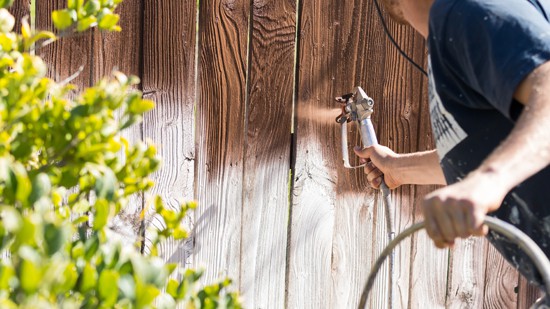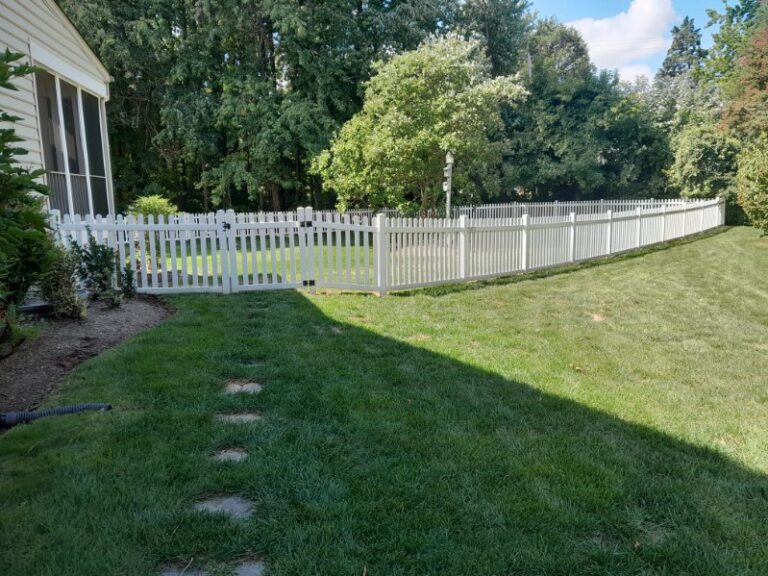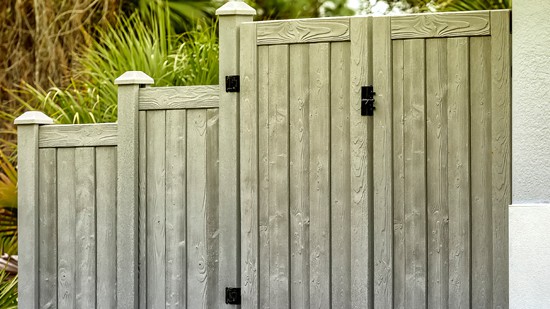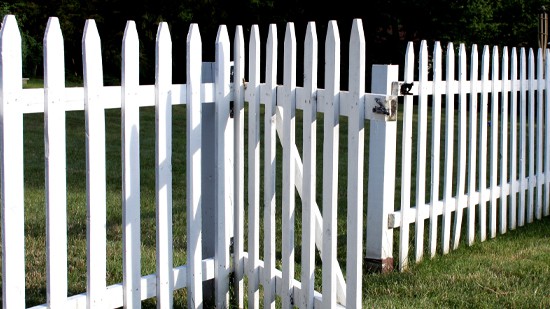Fence staining is a prominent requirement for wood fence maintenance. Not only does it improve the look of the fence, but it also shields it from potential harm. If your fence connects with another person’s yard, you may not know how to approach this process. Should you stain both sides of the fence or just the side facing your yard? Are your neighbors responsible for staining their side of the fence? Read on to find out.
Why Fence Staining Is Important
Fence staining seems like a hassle, but it is crucial for protecting your fence. Even if you have a pressure treated wood fence, it is susceptible to rot. The chemicals and/or natural oils in the wood eventually dry out, causing the wood to grey and wear down. Fence staining replenishes the shield on the pickets and creates a barrier against precipitation and sun rays. Think of it like wax on your car or a top coat for your nail polish.
Why You Should Stain Both Sides of the Fence
If you only stain “your side” of the fence, you’re leaving the other side susceptible to damage. In fact, this may actually do more harm than good because you’re preventing rain water from evaporating on both sides. If you stain the fence all the way around, you create an envelope that keeps rain out of the wood. With only one side of protect, water will get in and get trapped behind the barrier.
The only true way to protect your fence is by staining both sides. This is easy to do if the fence is entirely on your property, but it’s a little trickier when you have neighbors to consider. We’ve helped countless homeowners navigate this process, and we’d be happy to work with you to get both fence sides stained.
Is My Neighbor Responsible for Staining Their Side of the Fence?
There is no easy answer to this question. If you and your neighbor split the cost of your connecting fence, you may also split the cost of staining. However, you shouldn’t approach this project with repayment in mind. Ultimately you are responsible for anything on your property, including the side of the fence you don’t necessarily see. It’s an investment in the longevity and durability of your fencing that will save you money in the future.
You should talk to your neighbor before you commit to staining your fence. Even if they are unable to pay for part of the staining, they need to be aware that fence stainers need access to their property. Coordinate with your neighbors just like you did when you got your fence installed, and you’ll have a much more positive experience.
How Often Do Fences Need to Be Stained?
Most wood fences should be stained every 3-5 years, but some may require more frequent staining than that. For instance, if one side of your fence gets persistent sun exposure, the stain may fade faster than it does on other parts of the fence. We use top-quality fence stains for our projects to reduce frequency as much as possible.
What If I Can’t Access the Back of My Fence?
If you have a troublesome neighbor or another fence running along your fence line, staining the back may be difficult or impossible. In this case, you may consider upgrading to a fence that doesn’t require staining, such as vinyl. The initial cost may be more than staining the fence, but at least you won’t have to worry about future upkeep.
Alternate Option: Choose a Fence That Doesn’t Require Staining
Wood fences are more affordable than other materials upfront, but the frequent need for staining adds up over the years. If you want something a little more hassle-free, consider a manufactured material like vinyl or composite fencing. You can still get the look of a beautiful wood fence, but you don’t have to worry about staining the front and back every few years. All Around Fence installs a variety of fence materials, and we can find the solution that works best for your property.
Call (443) 838-9374 to schedule a quote for fence staining or fence replacement.





